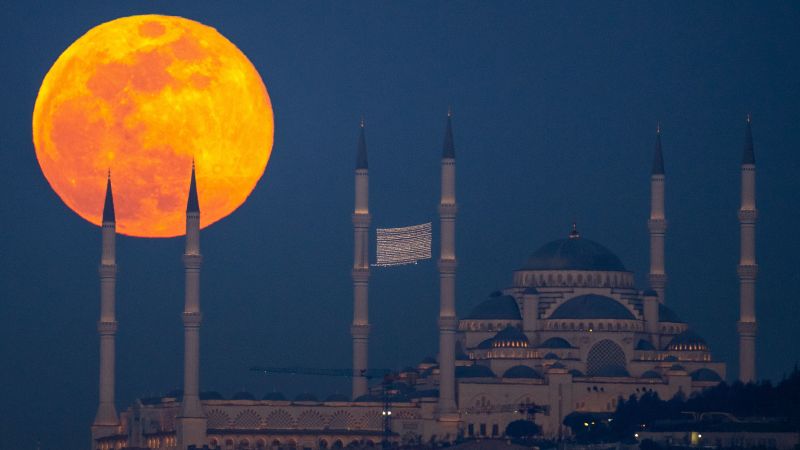
Subscribe to CNN’s Wonder Theory science newsletter.Delve into the cosmos with updates on captivating discoveries, scientific progress, and more.
CNN
—
Take a moment this week to gaze upward for February’s full snow moon and to catch a fleeting display of planets in the evening sky before they disappear from sight.
This lunar phase will peak at 8:53 a.m. ET on Wednesday, yet the luminous sphere will maintain a full appearance until Thursday evening, as stated by NASA.
The moon derives its name from the heavy snowfall that typically occurs in February, according to The Old Farmer’s Almanac. Various indigenous tribes also have similar traditions for February’s full moon. For example, the Comanche refer to it as the sleet moon, the Lakota tribe’s name translates to “when trees crack because of cold,” and the Wishram people call it “shoulder to shoulder around the fire moon.”
In the meantime, four planets can be seen with the naked eye after sunset through mid-February, as noted by NASA.
While some might be quick to label this display as a special planetary alignment, it’s not uncommon to spot a couple of planets at this time; however, witnessing four or five prominent planets in the night sky all at once is a rarer occasion. Planets always align along a plane in the sky due to their orbit around the sun being situated in a largely flat configuration known as the ecliptic.
Venus radiates brilliantly in the western sky, while the amber-hued Mars can be seen high in the east. Jupiter shines brightly above, and Saturn makes a faint appearance low in the west for about an hour after sunset.
By the end of February, Mercury will be directly above the horizon, gleaming brightly as twilight descends.
Here are the upcoming full moons to look forward to this year.
March 14: Worm moon
April 12: Pink moon
May 12: Flower moon
June 11: Strawberry moon
July 10: Buck moon
August 9: Sturgeon moon
September 7: Corn moon
October 6: Harvest moon
November 5: Beaver moon
December 4: Cold moon
Eclipses: Solar and Lunar
In 2025, there will be two partial solar eclipses. A partial solar eclipse occurs when the moon transitions between the sun and Earth, but the celestial bodies aren’t perfectly aligned, as noted by NASA.
Unlike a total solar eclipse, where the moon fully covers the sun, a partial eclipse results in only a portion of the sun being obscured, giving the appearance that the moon has taken a “bite” out of it.
The first partial solar eclipse is set for March 29, visible across parts of Europe, Asia, Africa, North America, and South America.
The second partial solar eclipse will take place on September 21 and can be seen over parts of Australia, Antarctica, and several Pacific islands.
Additionally, two total lunar eclipses will occur during the full moon phases in March and September. A lunar eclipse happens when Earth positions itself between the moon and the sun, resulting in the moon entering our planet’s shadow.
When the moon is immersed in the darkest part of Earth’s shadow, known as the umbra, it takes on a reddish tint, leading to the nickname “blood moon,” as per NASA. This shadow is not perfect; soft sunlight filters around its edges, creating stunning sunset-like hues on the moon.
The first total lunar eclipse will be visible from March 13 to March 14 across Western Europe, Asia, Australia, Western Africa, North and South America, and Antarctica. The second total lunar eclipse will occur between September 7 and September 8, observable from parts of Europe, Asia, Australia, Africa, Eastern South America, Alaska, and Antarctica.
For detailed information about each eclipse’s timing and viewing locations, visit Time and Date’s website.
Here are the peak dates for the upcoming annual meteor showers, according to the American Meteor Society.
Lyrids: April 21-22
Eta Aquariids: May 3-4
Southern Delta Aquariids: July 29-30
Alpha Capricornids: July 29-30
Perseids: August 12-13
Draconids: October 8-9
Orionids: October 22-23
Southern Taurids: November 3-4
Northern Taurids: November 8-9
Leonids: November 16-17
Geminids: December 12-13
Ursids: December 21-22









